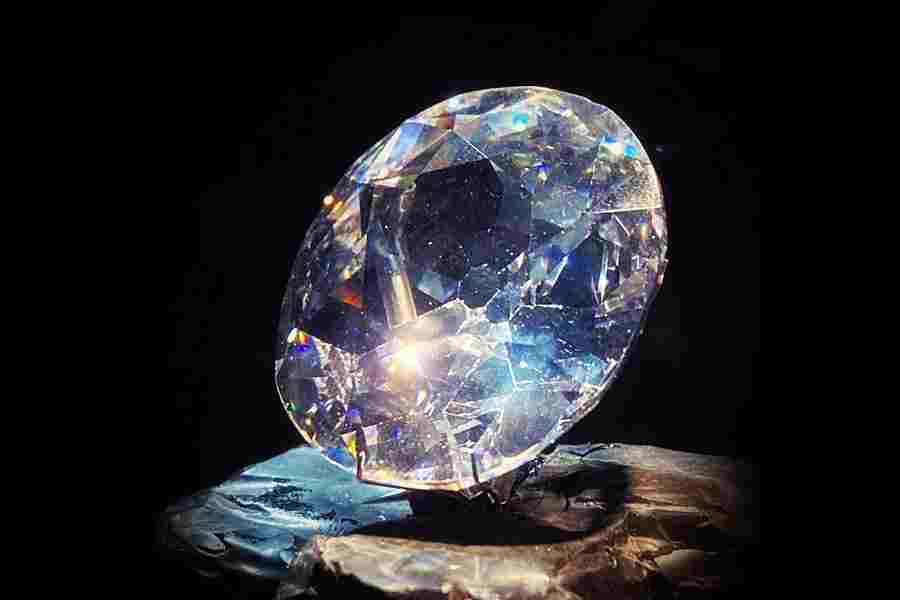India will wage a diplomatic campaign to reclaim the Koh-i-Noor diamond and thousands of other treasures from Britain in a “reckoning” with the colonial past, the Daily Telegraph can reveal.
Officials in New Delhi are preparing what would amount to the largest repatriation claim faced by the UK, on a scale that would dwarf Greece’s demands for the Elgin Marbles.
India’s ministerial and diplomatic staff will be mobilised to secure the return of potentially thousands of artefacts taken to Britain during the days of empire, in what one source described as a “reckoning with the past”.
It is understood that their goal is to secure the return of the Koh-i-Noor diamond, which is one of the Crown Jewels held in the trust of the King.
The reclamation of historical artefacts taken from India “comes from the top” of Indian politics, and is one of the priorities of Narendra Modi’s Premiership.
It is understood the issue may spill over into diplomatic talks between the UK and India on matters such as trade.
Govind Mohan, secretary for the Indian ministry of culture, said that returning antiquities would form a key part of India’s policy-making, adding: “It is of huge importance to the government. The thrust of this effort to repatriate India’s artefacts comes from the personal commitment of Prime Minister Narendra Modi, who has made it a major priority.”
The Archaeological Survey of India, a branch of the ministry of culture, is leading efforts to reclaim objects trafficked out of the country since it became independent.
Oxford’s Ashmolean Museum has already been approached regarding a bronze idol taken from a temple in southern India.
Officials in New Delhi will co-ordinate a separate push for the return of artefacts taken during British rule, with sources claiming these were effectively stolen because they were “unethically” removed in a state of “colonial coercion”.
Diplomats in London will make formal requests to institutions holding artefacts seized as spoils of war or collected by enthusiasts during colonial rule. The process is supposed to begin this year.
India’s vision for the wholesale repatriation of artefacts, including from institutions that require royal permission or parliamentary legislative change in order to go ahead, presents a daunting diplomatic situation for Rishi Sunak.
The Prime Minister was hailed as a “living bridge” to Indians in the UK by Modi after he was made Tory leader.
The Koh-i-Noor 105-carat diamond once topped the Mughal emperors’ Peacock Throne. It was held by Indian rulers before being handed over to the East India Company and was then given to Queen Victoria following the annexation of Punjab.
The jewel adorned Queen Mary’s Crown but was not displayed at the Coronation last week.
The return of such a historically significant artefact would be “deeply symbolic”, according to ministerial circles in New Delhi, and there is understood to be a political will to achieve such a symbolic post-colonial victory.
The British Museum is expected to face claims for its collection of Hindu statues and the Amaravati Marbles, which were taken from a Buddhist stupa by civil servant Sir Walter Elliot, opening yet up another repatriation row for the under-fire museum. The Victoria and Albert Museum’s Indian collection will also be subject to claims.
Amaravati Marbles
The Amaravati Marbles are held in the British MuseumThese museums are bound by law to keep their collections intact, potentially putting India at odds with Westminster, which has refused to countenance changing legislation to facilitate similar claims, such as the case of the Elgin Marbles.
It is understood charities will be approached first as they are able to repatriate objects, and the National Trust could legally hand over Indian artefacts many of which are held at Clive of India’s old country seat of Powis Castle, in Wales.
The long work of repatriation will begin with what is considered the easiest targets, small museums and private collectors, who may be more willing to voluntarily hand over Indian artefacts, and then efforts will turn to larger institutions and Royal collections.
‘Own history’
Poet Rabindranath Tagore lamented in 1903 that in the history of India “written by foreigners”, Indians themselves featured as no more than “dust and storm”.
More than 100 years after this anguished essay, Narendra Modi, India’s Prime Minister, quoted those words as he reopened a string of restored buildings dedicated to the preservation of his nation’s history and exhorted his nation to “show our country’s heritage and culture before the world”.
It is a pillar of his policy-making and a personal commitment, according to officials in New Delhi, but they also said there was a fundamental difficulty in being able to show off national heritage if it was no longer in the nation.
To resolve this, Modi’s government is launching a diplomatic campaign to reclaim the artefacts from Britain, with the Koh-i-Noor diamond — one of the largest cut diamonds in the world — understood to be his goal in this effort.
Those close to this process and his vision for India’s cultural policy have suggested he wants to replace one national identity with one more rooted in India’s 4,000-year history than the 90 years it spent under the Raj.
Plucking a diamond from the Crown Jewels of a former ruler is understood in New Delhi to have huge symbolic power.
With the UK set aside until now, Modi has been busy reclaiming artefacts from around the world. Between independence in 1947 and 2014, 13 objects taken from India were repatriated. Since Modi became Prime Minister in 2014, more than 300 have been returned, many of them depictions of Hindu deities.
His commitment was made clear when he said in a speech this year:
“We have a wonderful history of about 2,000 and 5,000 years. This cut-off (colonial rule) has done a lot of damage to us.”
The Daily Telegraph, London











